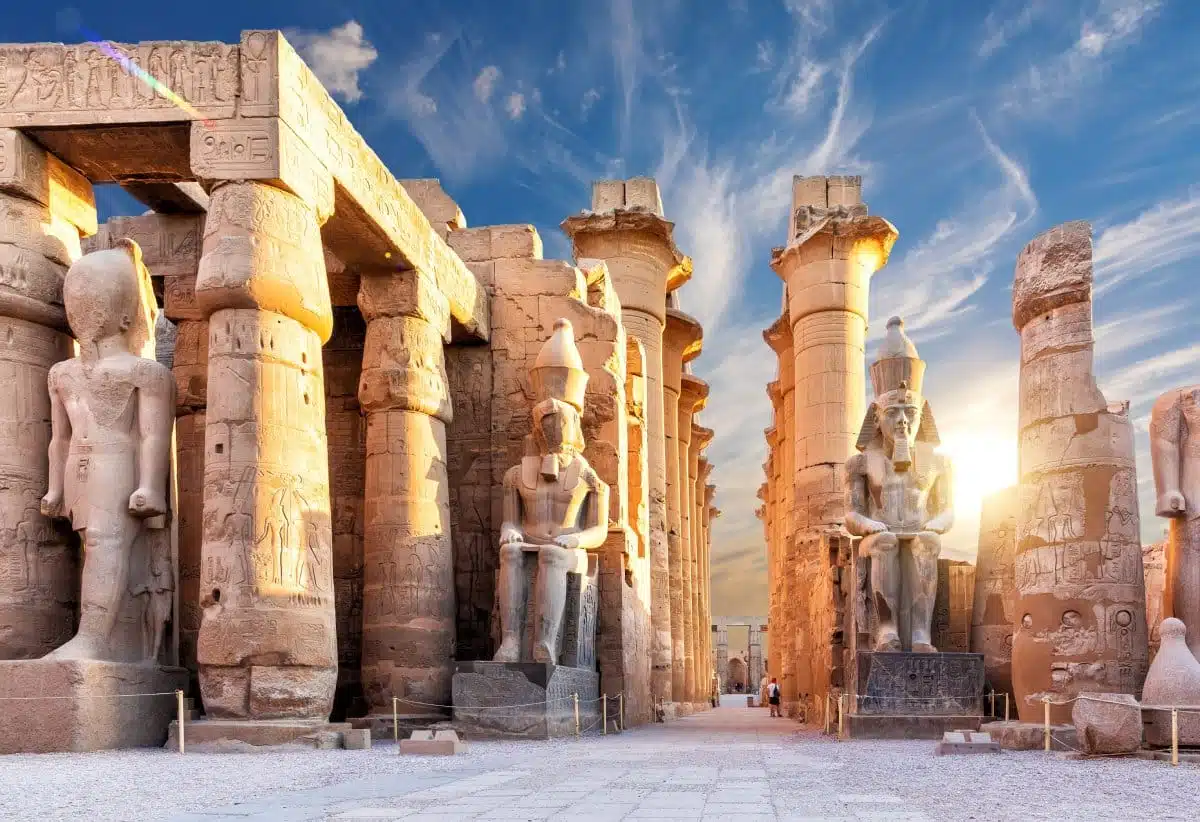Embark on a journey back in time as you explore the ancient ruins of the Middle East, a region rich in history and culture. From the monumental pyramids of Egypt to the mystical ruins of Petra, each site tells a story of civilizations long gone but not forgotten. These ancient ruins are historical landmarks and gateways to understanding complex human history and enduring legacies of the past. This guide is designed for history enthusiasts and curious travelers alike, offering a comprehensive look into the most awe-inspiring archaeological sites of the Middle East. Prepare to be captivated by the ancient wonders that await.
1. Pyramids of Giza, Egypt
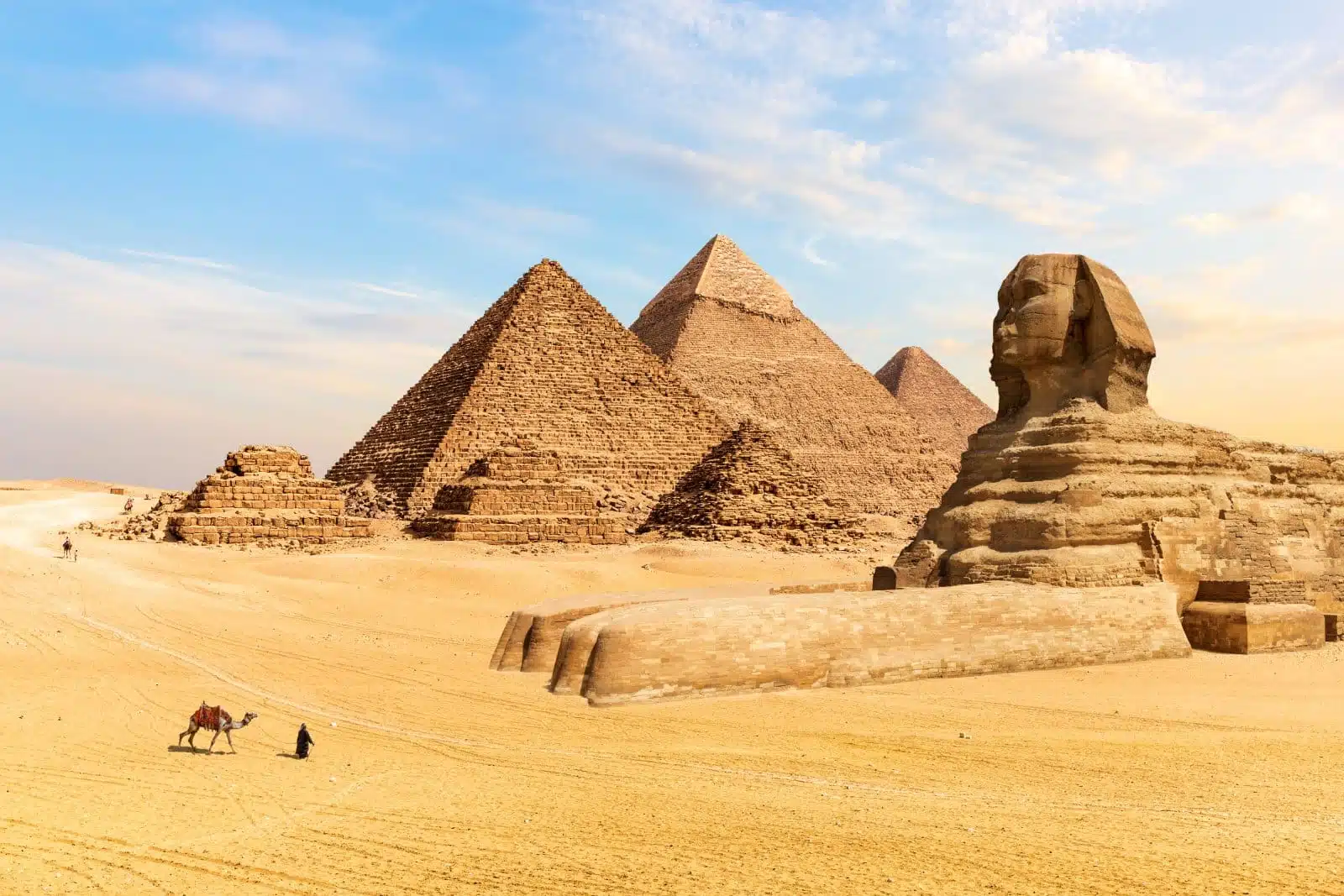
Image Credit: Shutterstock / AlexAnton
The Pyramids of Giza, located on the outskirts of Cairo, represent one of the most significant archaeological sites in the world. These monumental structures, built as tombs for the pharaohs, have stood for millennia as symbols of ancient Egypt’s grandeur. The Great Pyramid of Khufu, the largest and oldest of the three, is a testament to the architectural prowess of the ancient Egyptians. Visitors can explore the interiors of the pyramids, marvel at the Sphinx’s towering presence, and immerse themselves in the rich historical and cultural tapestry surrounding these wonders of the world. The Giza plateau offers an unparalleled insight into the world of ancient Egypt, where mythology and history converge.
Insider’s Tip
Visit early in the morning to avoid the crowds and the heat.
When To Travel
October to April for cooler weather.
How To Get There
Fly into Cairo International Airport and take a taxi or a guided tour to the Giza plateau.
2. Petra, Jordan
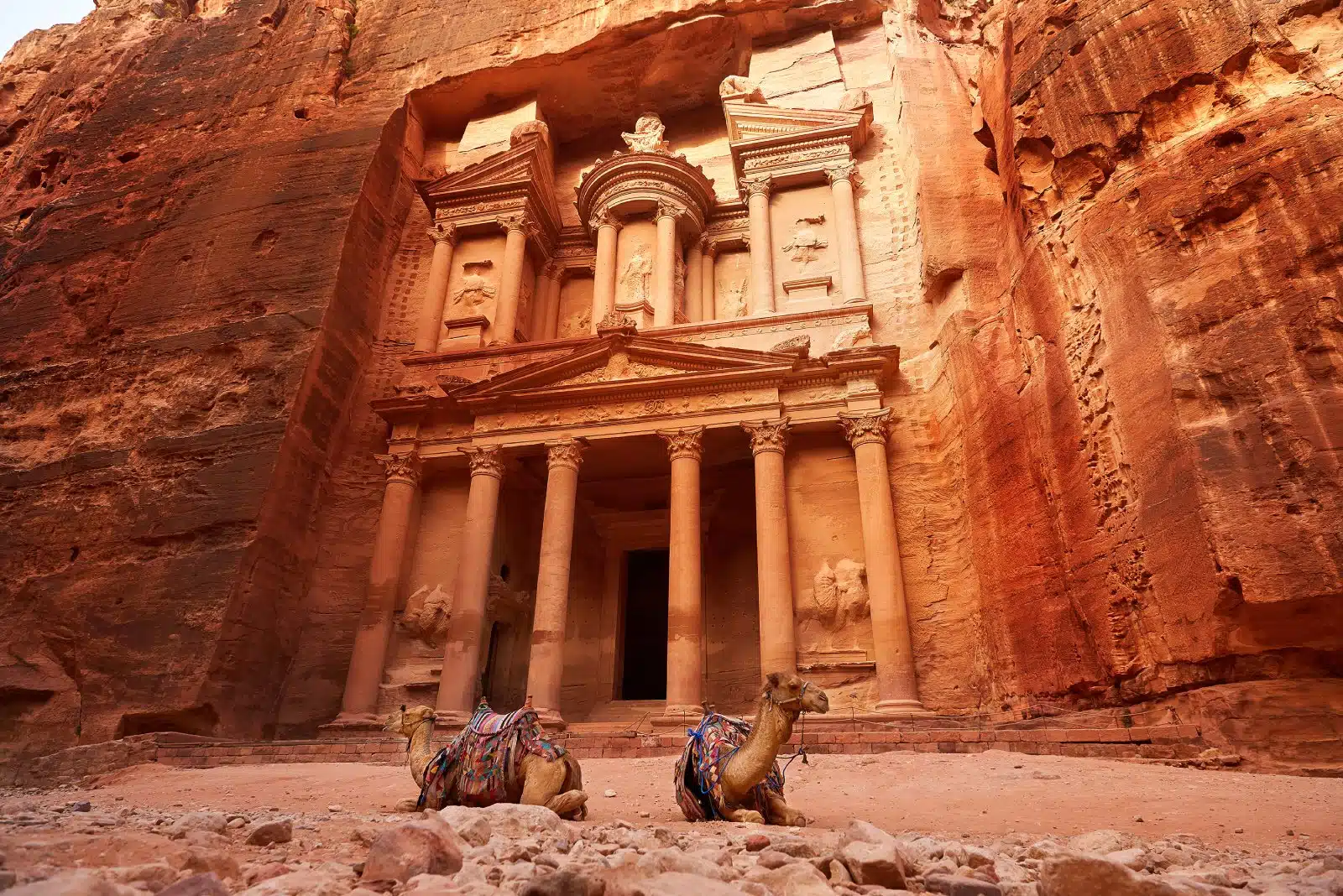
Image Credit: Shutterstock / Aleksandra Kossowska
Petra, the ‘Rose City,’ is a majestic archaeological site carved into the rose-red cliffs of southern Jordan. This ancient city, once the capital of the Nabatean Kingdom, reveals its splendors as you traverse the Siq, a narrow gorge leading to its most famous structure, the Treasury. Beyond the Treasury, the vast site encompasses tombs, temples, an ancient theater, and intricate water conduit systems, highlighting the Nabateans’ architectural and hydraulic ingenuity. The city’s blend of Hellenistic and local architectural styles and its strategic position on the caravan routes made it a major trading hub in antiquity. Exploring Petra is a journey into a lost world, where every structure and carving has a story to tell.
Insider’s Tip
Plan to fully explore the vast site for at least two days.
When To Travel
March to May or September to November for mild weather.
How To Get There
Fly to Queen Alia International Airport, drive to Petra, or take a bus from Amman.
3. Persepolis, Iran
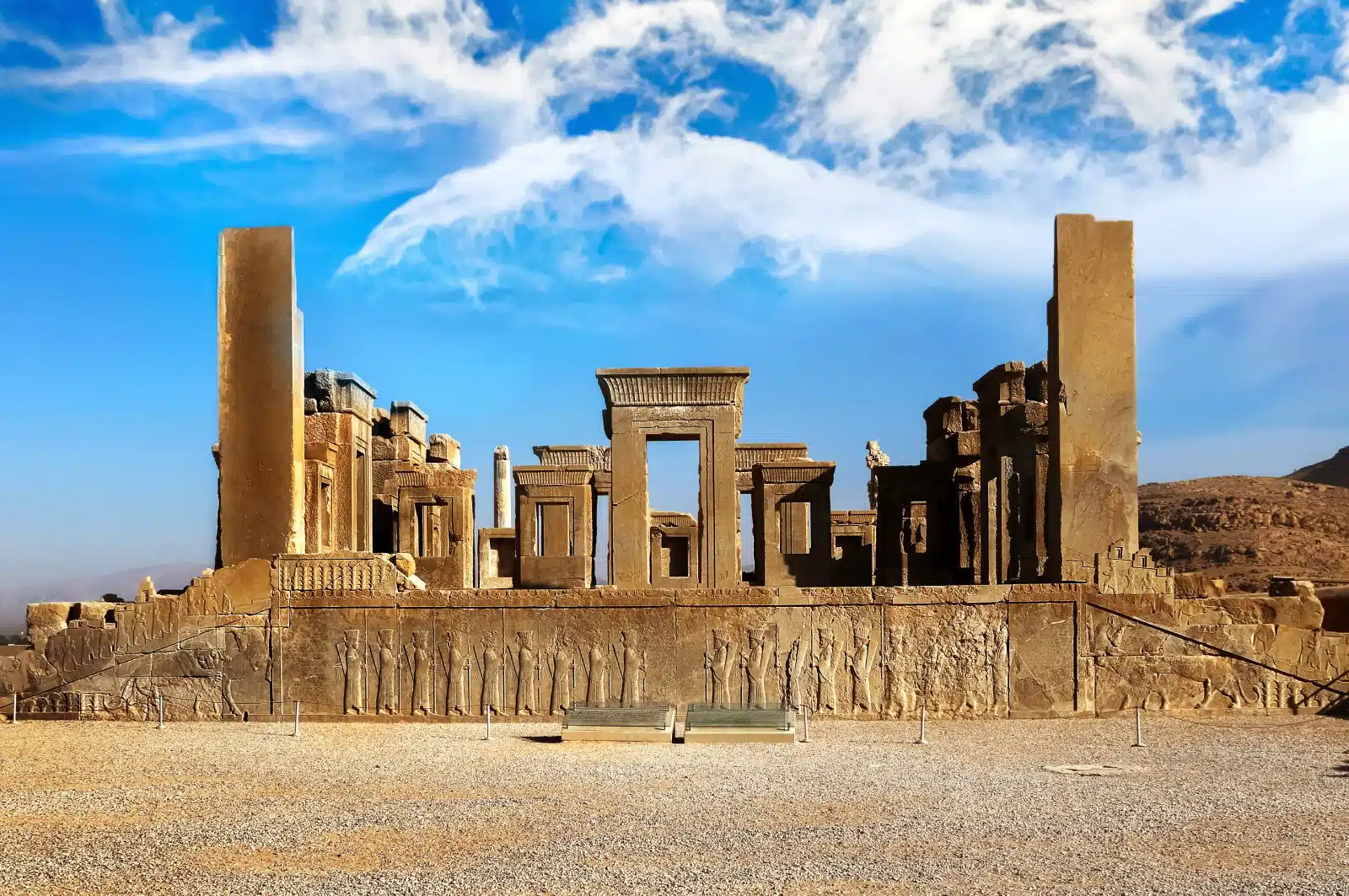
Image Credit: Shutterstock / Delbars
Persepolis, the ancient ceremonial capital of the Achaemenid Empire, is in modern-day Iran’s Fars Province. Founded by Darius I in 518 BCE, this UNESCO World Heritage site is a masterpiece of Persian architecture. The ruins of Persepolis, set against a stark mountainous backdrop, include grand palaces, imposing gateways, and exquisite bas-reliefs depicting scenes of ancient ceremonies and delegations. The site offers a profound glimpse into the Achaemenid Empire’s power and the cultural richness of ancient Persia. Exploring Persepolis is an incredible walk through history, where the intricacies of each relief and column narrate stories of a civilization that once ruled over a significant portion of the ancient world.
Insider’s Tip
Hire a knowledgeable guide to understand the historical significance of the reliefs and structures.
When To Travel
March to May for the best weather conditions.
How To Get There
Fly to Shiraz International Airport and travel to Persepolis by taxi or tour bus.
4. Baalbek, Lebanon
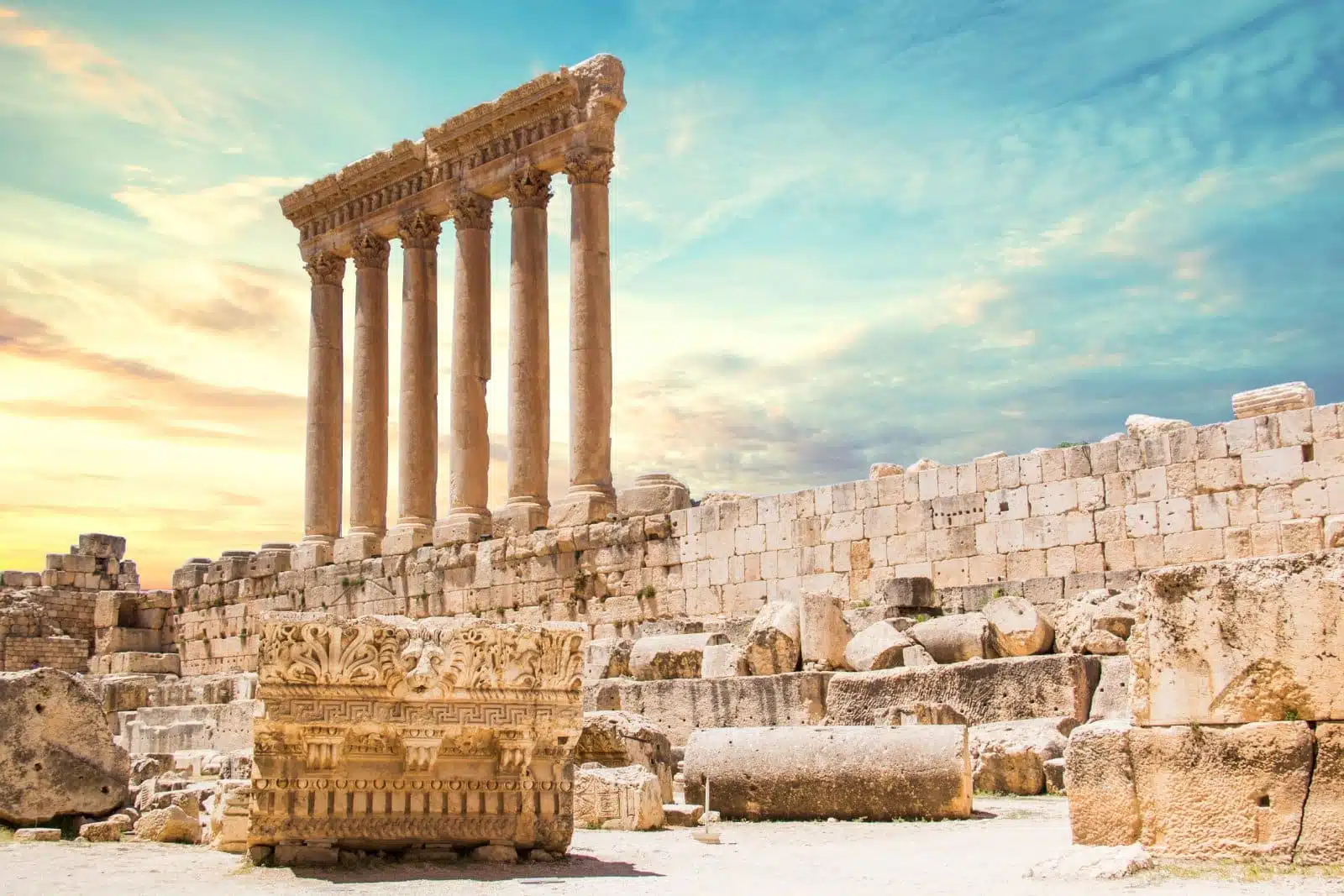
Image Credit: Shutterstock / MarinaDa
Baalbek, located in Lebanon’s Bekaa Valley, is an archaeological site of immense historical significance. Known for its well-preserved Roman ruins, Baalbek was once a major Roman temple complex dedicated to Jupiter, Venus, and Bacchus. The Temple of Bacchus, one of the best-preserved Roman temples, stands as evidence to the grandeur and skill of Roman architecture and engineering. The site’s colossal columns, intricate stone carvings, and monumental scale offer a glimpse into the religious and cultural life of Roman Baalbek. Today, Baalbek is an archaeological spectacle and a cultural hub, hosting the annual Baalbek International Festival, which brings music and arts to this ancient setting.
Insider’s Tip
Attend the Baalbek International Festival if you visit in the summer to enjoy performances among the ruins.
When To Travel
April to June and September to October for pleasant weather.
How To Get There
Fly to Beirut International Airport and take a car or a bus to Baalbek.
5. Jerash, Jordan
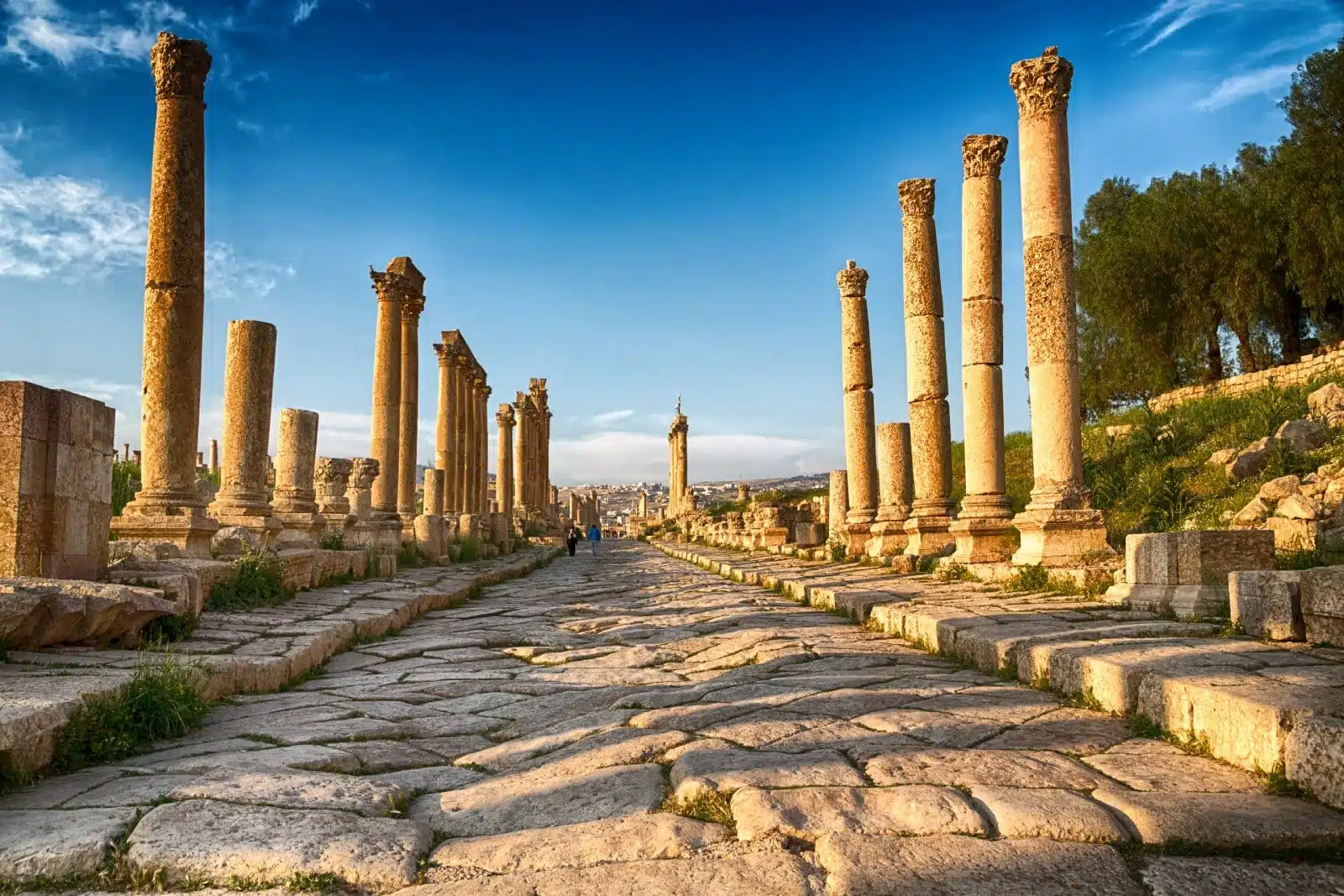
Image Credit: Shutterstock / lkpro
Jerash often hailed as the ‘Pompeii of the East,’ is one of the best-preserved Roman provincial towns in the world. Located in northern Jordan, this ancient city boasts a wealth of Greco-Roman architectural wonders, including colonnaded streets, grand temples, impressive theaters, and sprawling plazas. The city’s history, dating back over 6,500 years, is evident in every corner, from the imposing Hadrian’s Arch to the Oval Plaza’s elegant colonnade. Jerash’s annual festival brings the ancient city to life with cultural events, music, and dance performances, providing a vibrant backdrop to its historical grandeur. Visiting Jerash is a journey through time, offering a vivid glimpse into the daily life and urban structure of a classical Roman city.
Insider’s Tip
Watch the re-enactment of Roman legionnaires and chariot races at the Hippodrome.
When To Travel
Spring and autumn for comfortable temperatures.
How To Get There
Fly to Queen Alia International Airport, drive to Jerash, or take a bus from Amman.
6. Palmyra, Syria
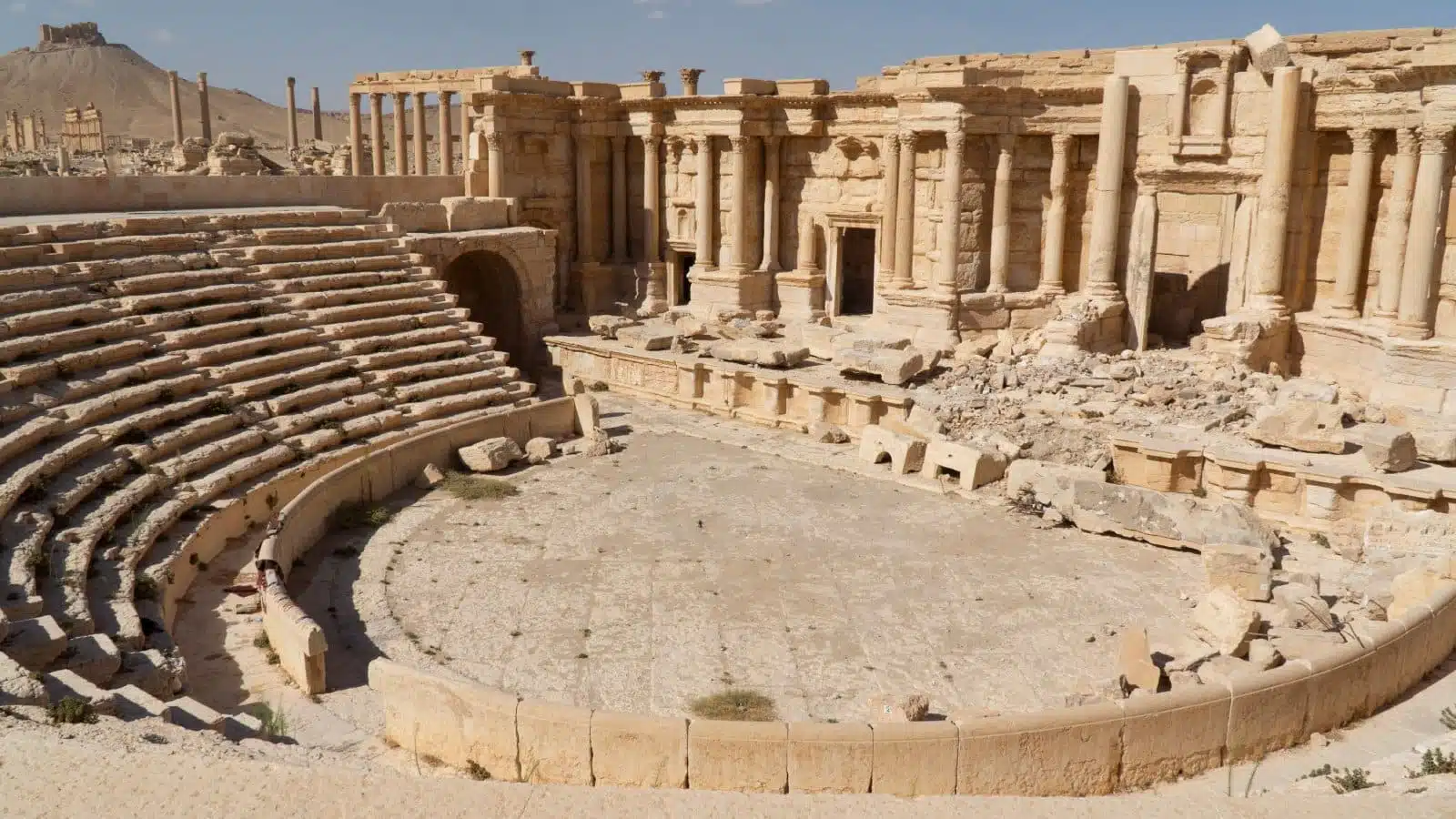
Image Credit: Shutterstock / Peter Sobolev
Palmyra, once a thriving oasis city in the Syrian desert, was a significant cultural and economic center of the ancient world. This UNESCO World Heritage site, known for its distinctive blend of Greco-Roman and Persian architectural styles, is a testament to the city’s historical importance as a caravan stop on the Silk Road. The ruins of Palmyra, set against the vast desert landscape, include the Temple of Bel, the colonnaded main street, and the Valley of Tombs. The city’s strategic location facilitated cultural exchanges between the East and West, making it a melting pot of civilizations. Exploring Palmyra offers a unique insight into the ancient world’s interconnectedness and the cultural diversity that shaped this historic city.
Insider’s Tip
Check travel advisories and local conditions as the region has experienced instability.
When To Travel
Spring and autumn for the best climate.
How To Get There
Due to the current situation, access to Palmyra is limited and subject to change.
7. Hatra, Iraq
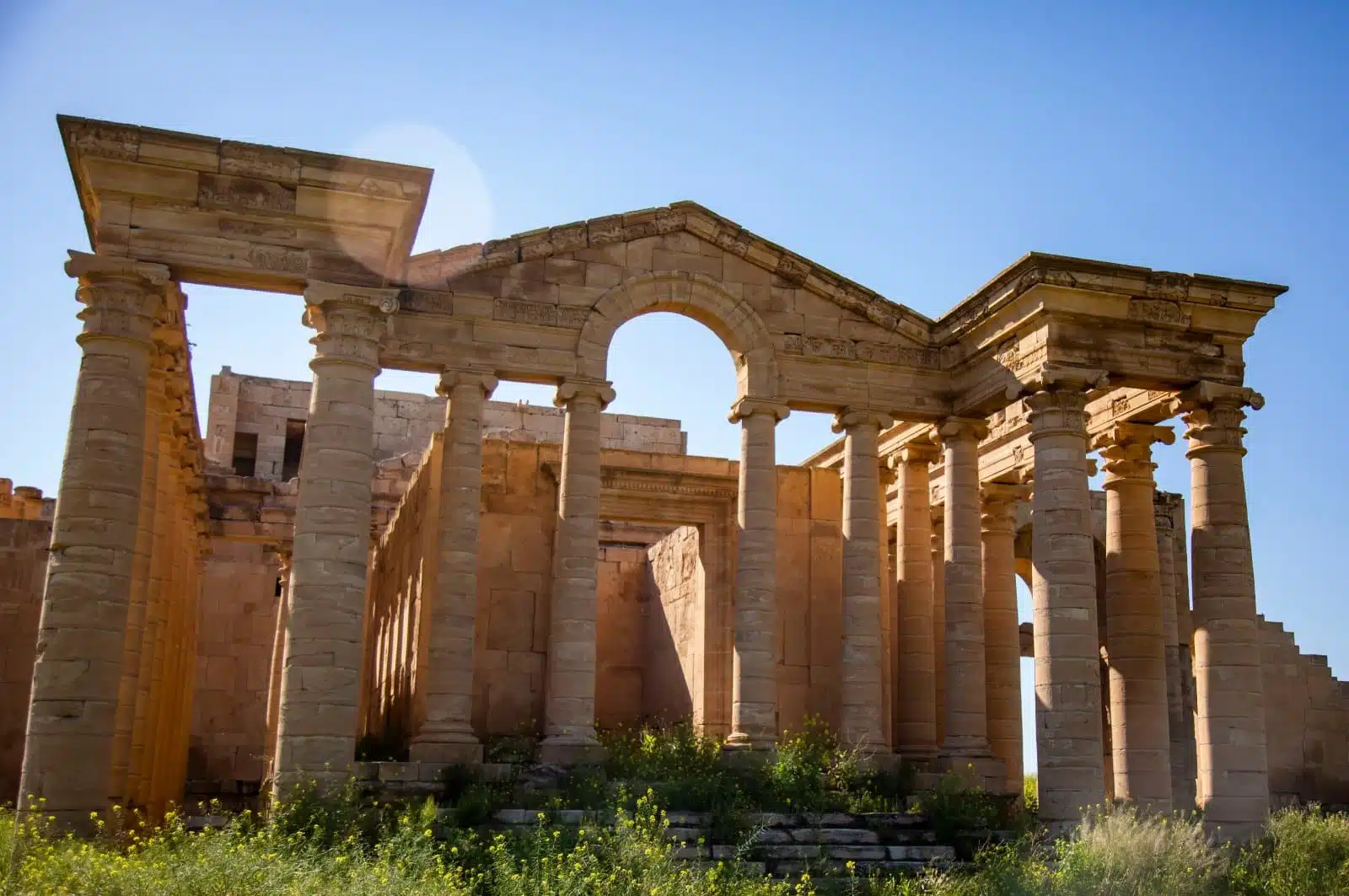
Image Credit: Shutterstock / Hussein Almukhtar
Hatra, located in northern Iraq, was an ancient fortified city under the Parthian Empire and later the center of the first Arab Kingdom. The city’s ruins are characterized by a unique architectural style that blends Hellenistic and Roman elements with Eastern influences. Hatra’s temples, statues, and fortified walls speak of its historical significance as a religious and trading center. The site’s well-preserved state offers a fascinating glimpse into the art and architecture of the Parthian period. Exploring Hatra provides an understanding of ancient Mesopotamia’s cultural diversity and artistic achievements, showcasing the region’s role as a crossroads of civilizations. Insider’s Tip
Given the current situation in Iraq, it’s important to stay updated on travel advisories and local conditions.
When To Travel
Ideally in spring or autumn.
How To Get There
Access is currently challenging and subject to regional security situations.
8. Ephesus, Turkey
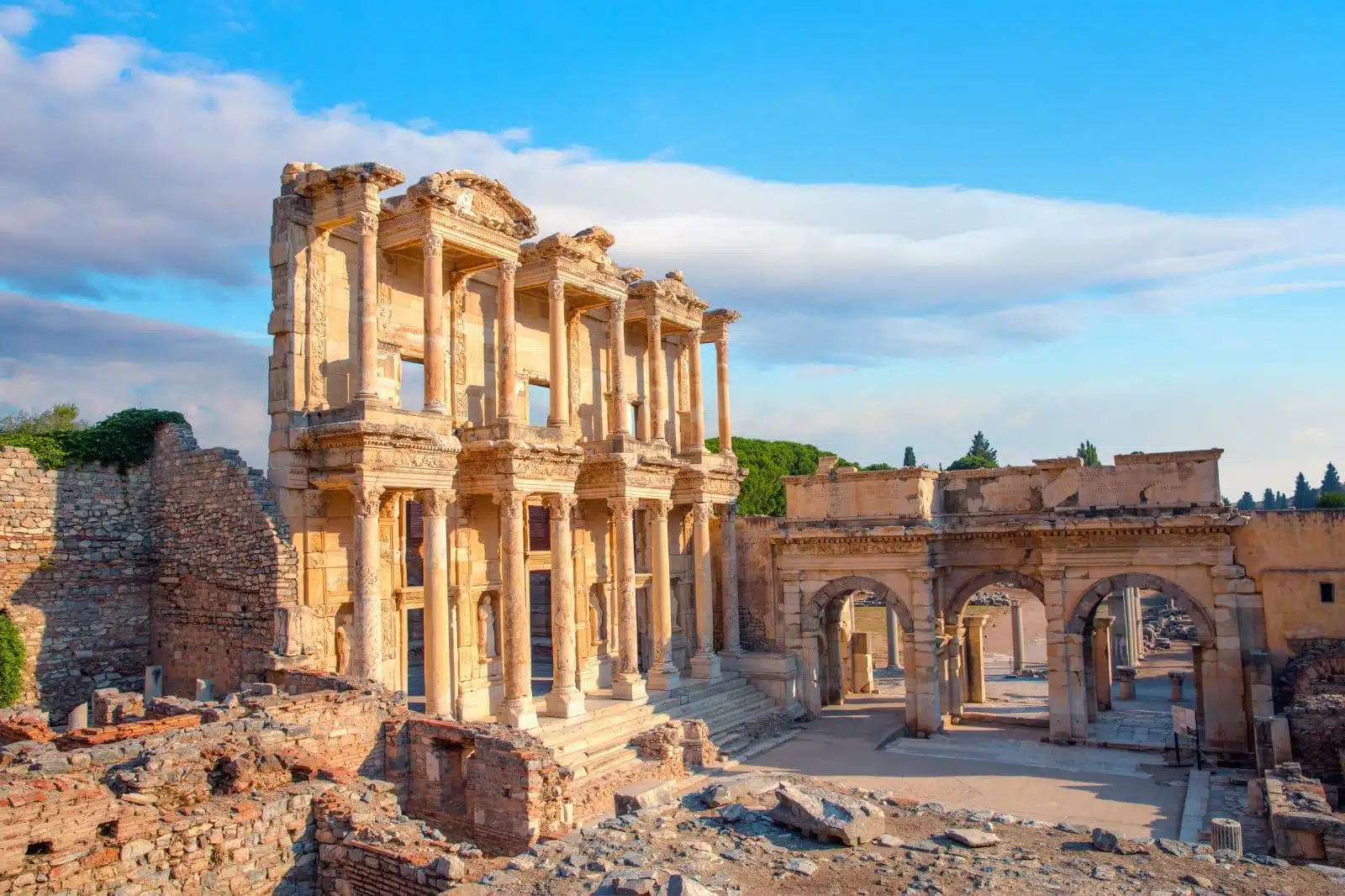
Image Credit: Shutterstock / muratart
Ephesus, an ancient Greek city on the coast of Ionia, is one of Turkey’s most significant archaeological sites. This historic city was once a major trade center and played a crucial role in the spread of Christianity. Today, Ephesus’s ruins, including the Library of Celsus, the Great Theatre, and the Temple of Artemis (one of the Seven Wonders of the Ancient World), attract visitors from around the globe. The site offers an immersive experience of the Greco-Roman world, where every ruin and column tells the story of a city at the forefront of cultural and intellectual developments in the ancient world.
Insider’s Tip
Visit the nearby House of the Virgin Mary, considered a holy site.
When To Travel
April to June and September to October to avoid the summer heat and crowds.
How To Get There
Fly into Izmir Adnan Menderes Airport and drive or take a bus to Ephesus.
9. Masada, Israel
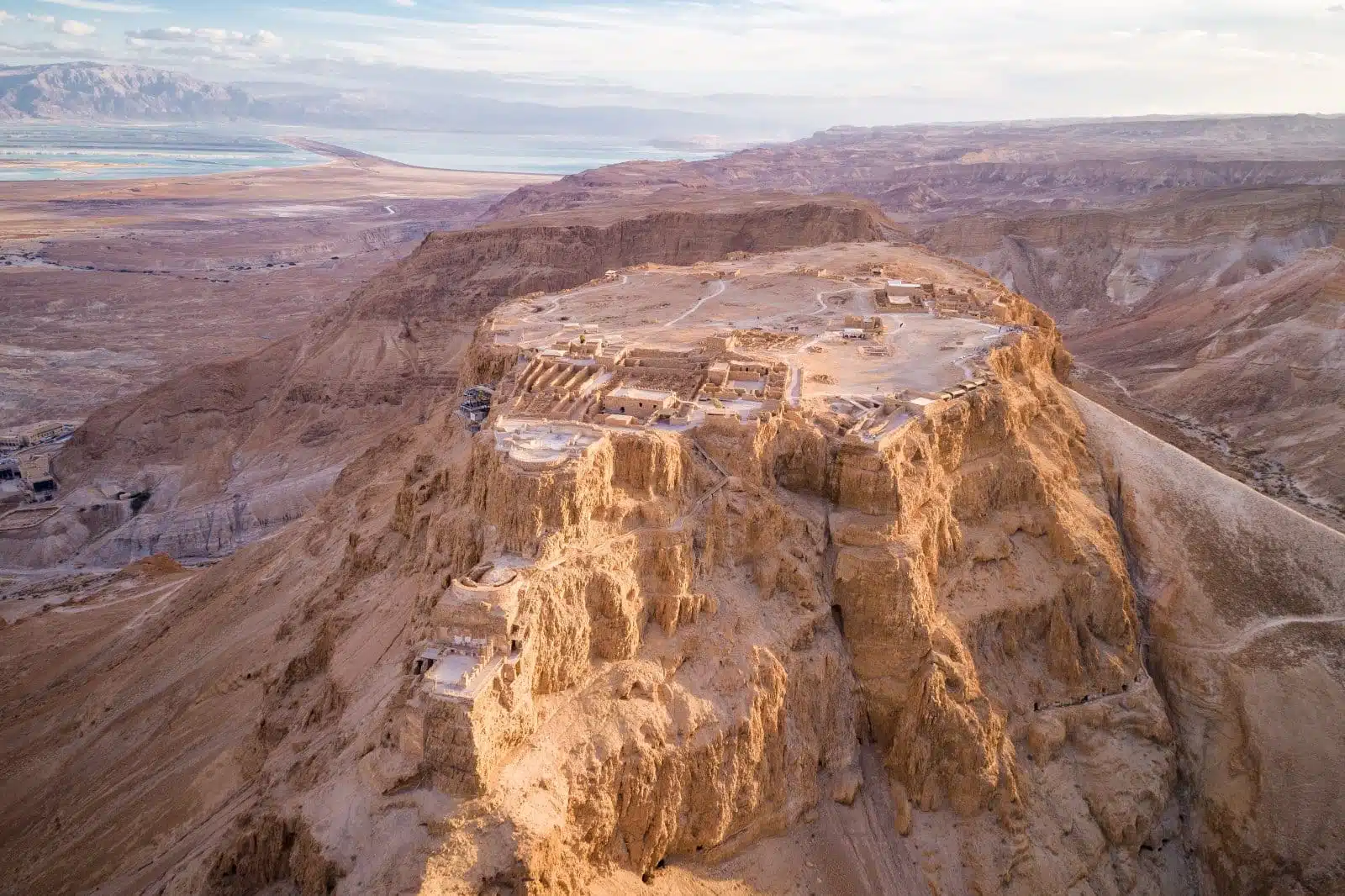
Image Credit: Shutterstock / photosounds
Venture to Masada, an ancient fortress perched atop a rocky plateau overlooking the Dead Sea in Israel. This UNESCO World Heritage Site symbolizes the ancient Jewish kingdom’s last stand against Roman invasion. The fortress, accessible by a winding path or cable car, offers a glimpse into the life of the Zealots who made their final stand here. Exploring Masada, you’ll encounter well-preserved remnants of palaces, baths, and storerooms, alongside breathtaking views of the surrounding desert and the Dead Sea. The story of Masada is one of courage and tragedy, etched into the fabric of Jewish history. It’s a poignant reminder of the past’s resilience and the enduring spirit of a people.
Insider’s Tip
Hike up the Snake Path for sunrise to experience the site in the most dramatic light.
When To Travel
Visit in spring or autumn for moderate temperatures.
How To Get There
Fly to Ben Gurion Airport, drive to Masada, or join a guided tour.
10. Byblos, Lebanon
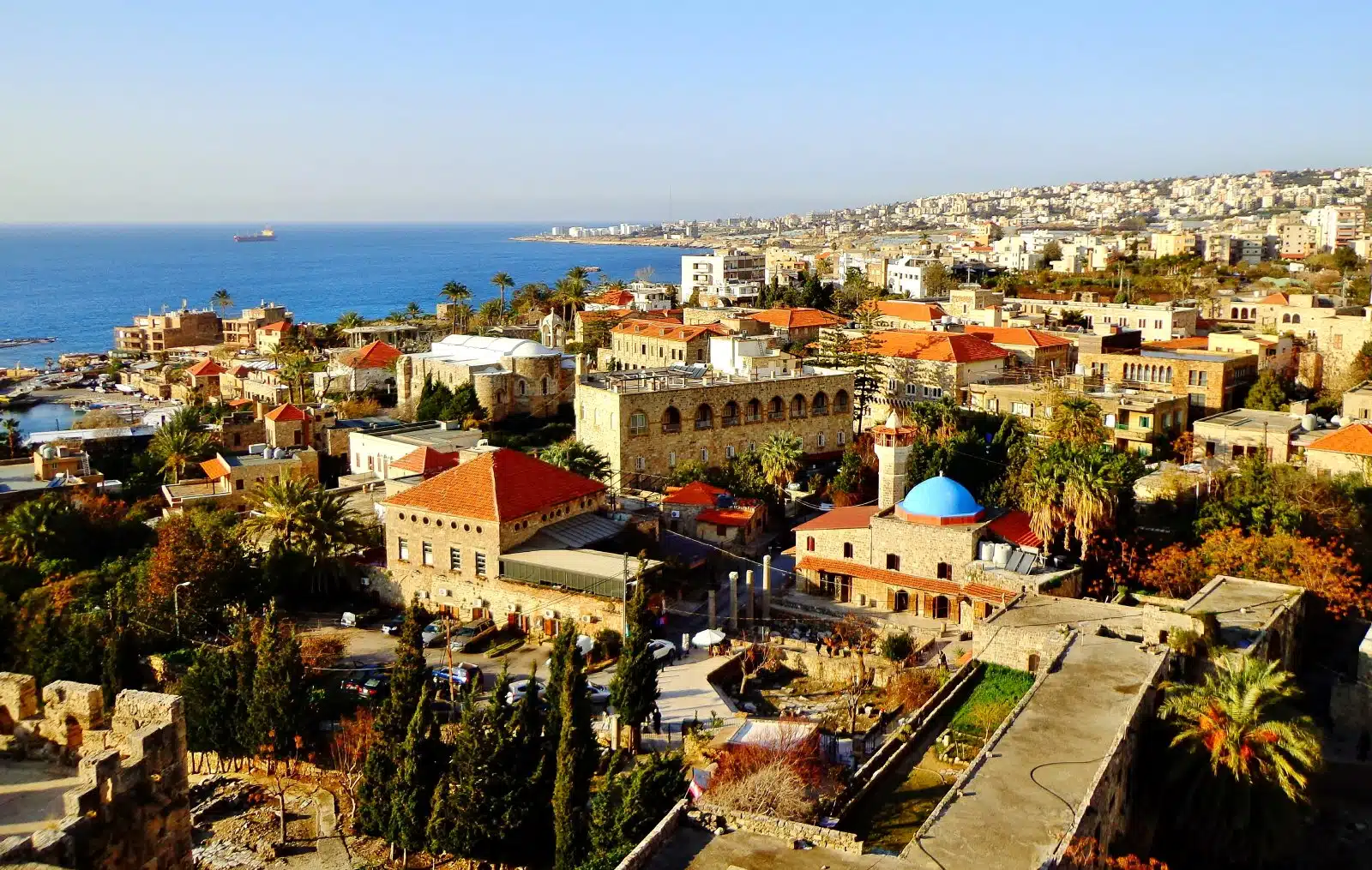
Image Credit: Shutterstock / Nate Hovee
Byblos, a city steeped in millennia of history, is one of the oldest continuously inhabited cities in the world. Located on the Mediterranean coast of Lebanon, Byblos is a treasure trove of ancient civilizations, including Phoenician, Greek, Roman, and Ottoman. The archaeological site features an ancient Phoenician temple, Roman theater, and Crusader castle, each telling a distinct story of the city’s past. Beyond its historical significance, Byblos is a lively coastal town known for its charming streets, vibrant nightlife, and beautiful beaches. The city seamlessly blends the ancient with the modern, offering visitors a unique experience of Lebanon’s rich cultural heritage and contemporary life.
Insider’s Tip
Explore the old souks and visit the Byblos Wax Museum to glimpse the city’s history.
When To Travel
May to October for the best weather.
How To Get There
Fly into Beirut International Airport and drive or take a taxi to Byblos.
The Bottom Line
Traversing through the ancient ruins of the Middle East is an exploration through history and culture. These sites are remnants of the past and living proof of human ingenuity and resilience. As you walk among these ruins, you connect with civilizations that shaped the world we know today. This journey is not just about witnessing the grandeur of ancient empires; it’s about understanding our collective heritage and the enduring legacy of human creativity. Embrace the opportunity to step back in time, marvel at these historical wonders, and gain a deeper appreciation for the rich tapestry of the Middle East’s past.
More From The Green Voyage
Top 10 Trending Travel Destinations 2024
6 Essential Banking Apps for International Travel – Managing Your Finances on the Go
Traveling With Kids – 10 Tips to Create Memorable Family Holidays
The post 10 Ancient Ruins in the Middle East – Exploring Historical Sites 2024 first appeared on The Green Voyage.
Featured Image Credit: Shutterstock / AlexAnton.
For transparency, this content was partly developed with AI assistance and carefully curated by an experienced editor to be informative and ensure accuracy.
Tips for Trip Success
Book Your Flight
Find an inexpensive flight by using Kayak, a favorite of ours because it regularly returns less expensive flight options from a variety of airlines.
Book Your Hotel or Special Accommodation
We are big fans of Booking.com. We like their review system and photos. If we want to see more reviews and additional booking options, we go to Expedia.
You Need Travel Insurance!
Good travel insurance means having total peace of mind. Travel insurance protects you when your medical insurance often will not and better than what you get from your credit card. It will provide comprehensive coverage should you need medical treatment or return to the United States, compensation for trip interruption, baggage loss, and other situations.Find the Perfect Insurance Plan for Your Trip
